How to wirelessly charge your iPhone 7
Get iPhone X features for your iPhone 7
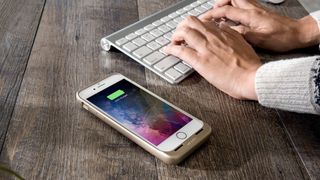
The iPhone 8 family was the first generation of Apple phones to support wireless charging, something which has been a mainstay in lists of potential iPhone features for the best part of a decade.
That now encompasses the iPhone X, iPhone XS, iPhone XS Max and iPhone XR, so Apple is going big on wireless charging going forward.
However, if you've come to this article thinking you can simply buy a charging pad for your (possibly) new iPhone and have it charge without wires, it's not possible. You can’t simply use Apple’s own upcoming wireless charge pad with older iPhones, though. Sorry.
However, there is a way to make your iPhone 7 or iPhone 7 Plus wirelessly charge just like an iPhone 8, and all you need are a couple of accessories that you can order fairly cheaply right this second.
Kitting out with a receiver
First, we need a case to receive a wireless charge signal. The AirPower technology seen in the iPhone 8 uses a specific chip that the iPhone 7 lacks, and even if it did have one under the hood, the older iPhone’s design is not suitable for wireless charging as standard.
Look at other wireless charging phones and you’ll see they either have plastic or glass backs, like the Samsung Galaxy S8. Metal rears like the iPhone 7’s are not suitable for current popular forms of wireless charging.
This is why we need to put the wireless charging receiver between the phone’s back and the wireless charging plate. It’s usually done with a case.
Get the best Black Friday deals direct to your inbox, plus news, reviews, and more.
Sign up to be the first to know about unmissable Black Friday deals on top tech, plus get all your favorite TechRadar content.
One of the most popular is the Mophie Juice Pack Air case, which adds transmitters for wireless charging. Alternatively, a lower-cost option comes from Nilkin, but a few reviews have shown that the connection can break after a few weeks or months, so it's a gamble on wireless charging you'll be taking there.
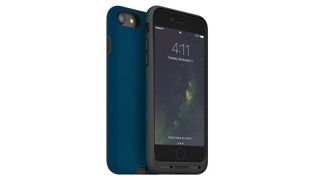
Know your standards: Qi and PMA
Apple AirPower uses a custom version of Qi (pronounced “chee”), as do most of the popular wireless charge pads. However, one of the longest-standing players in wireless charging, Powermat, uses PMA.
You can think of PMA and Qi as a bit like VHS vs BetaMax or Blu-ray vs HD DVD. They’re competing standards that aim to do roughly the same thing using different techniques.
If you’re thinking of buying a more affordable wireless charging case for your iPhone 7 that supports just a single standard, we’d strongly recommend getting on board with Qi rather than PMA.
While Starbucks uses PMA chargers in some of its stores (in the US), even it is starting to adopt Qi, because of Apple’s use of the standard in the iPhone 8 and iPhone X.
If you want something cheaper than the Mophie Charge Force you’ll find affordable Qi pad options online from companies like YooTech and Antye. The Antye Qi receiver case is around half the price of the Mophie alternative.
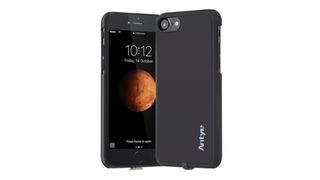
There are even receivers that leave out the case part, just attaching a 0.5mm thick panel to the back of your phone that connects to your iPhone 7’s Lightning port. It’s not the slickest look, but it minimizes bulk, and most should work through a thin case.
For the ultimate wireless charging solution, look for a case that also has a battery built-in. Once again, Mophie offers a great solution with the Juice Pack Air.
It’ll charge your iPhone’s battery wirelessly first before charging up the extra 2,525mAh battery in the case, which provides up to 27 hours’ extra use. The only downside is that a wireless battery case will be more bulky than a plain receiver one.
Getting a pad
The next part is buying the transmitter, the wireless pad on which you’ll rest your iPhone 7 to charge. Apple’s own AirPower pad isn’t out until 2018, but right now from the Apple online store you can buy Belkin’s Boost Up pad.
This is a Qi-based pad that supports up to 7.5W power output, which is actually greater than the 5W of the standard charger that comes with the iPhone 7.
However, it won’t charge your phone as quickly as Apple’s 12W charger, and wireless charging is also less efficient than normal wired charging. Both Mophie and Belkin do Apple-endorsed chargers, and having used both we can confirm they're tops for charging your newly-wireless-charge-enabled iPhone 7.
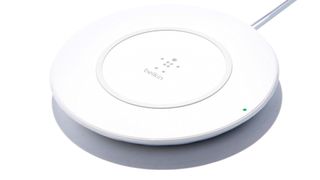
One interesting point to note is that Belkin sells a Samsung version of its Boost Up pad that is actually more advanced than the Apple variant, at the same price. It has a max output of 15W instead of 7.5W, and supports PMA as well as Qi.
While we don’t yet know the specs of the Apple AirPower pad as it's still a mystery years on, other than that it can charge multiple Apple devices at once, Samsung has a lot more experience in this area and already supports “fast” wireless charging.
So Samsung’s own wireless charging pad is actually another model you may want to consider, as iPhone 7 wireless charge cases are largely brand-agnostic, they just need to support the right standard.
Budget and lifestyle buys
There are cheaper options too. We’ve tried out the Anker PowerTouch 5W charge pad, and while it’s not a fast charger it will do the job as well as any when paired with a 5W receiver or iPhone 7 case.
It has a tough rubbery surface on which you leave your phone, a rubber ring underneath for stability and a neat carbon fiber effect on the sides.
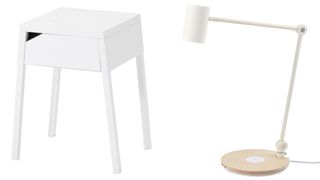
Some of the neatest wireless chargers don’t come from a tech company either: IKEA makes them. For $11.99/£10 (around AU$15) you can buy a basic Rallen wireless pad, and there are lamps and a bedside table with the tech built-in too.
Selje is the bedside unit, with a big “+” icon where the wireless charging transmitter sits. For your work desk you might want to consider a Riggad. It’s an LED lamp with the same “+” pad.
IKEA also makes a range of iPhone wireless charge cases called VitaHult. However, it only makes them for the iPhone 5, iPhone 5S and iPhone 6, not the iPhone 7.
Andrew is a freelance journalist and has been writing and editing for some of the UK's top tech and lifestyle publications including TrustedReviews, Stuff, T3, TechRadar, Lifehacker and others.
Most Popular


